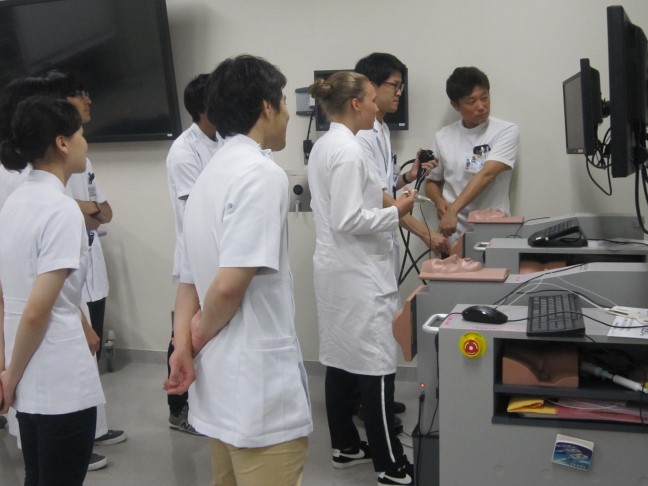Example
Simulation practice of esophagogastroduodenoscopy for medical students
Social background
Regarding technical skills in esophagogastroduodenoscopy, for a long period of time, residents in training at teaching hospitals and other beginners were told to learn by watching what their advising doctors did. They were not provided with any opportunity for practice and were always forced to perform endoscopic examinations on patients without rehearsal. This educational method was disadvantageous to both doctors and patients, and caused many problems.
Objectives
- Improving the educational method so that even beginners can perform high-quality endoscopic examinations
- Putting patient-friendly endoscopic examinations into practice
- Leveling skills so that no matter who performs an examination, medical care with the same quality can be provided
- Generating practical interest in endoscopic examinations as part of students’ education before graduation
Overview
At Okayama University, simulation practice in many fields are actively incorporated into the students’ education before graduation to provide all students with practical, high-quality education from an early stage. At the Gastroenterology and Hepatology Department, intestinal endoscope computer simulation is incorporated not only into education for residents but also basic clinical practice for undergraduate students. Universities that have introduced this simulation practice are rare in Japan, and they are well received by students.
Expected effects
- Fostering medical human resources who can provide high-quality medical care to patients
- Arousing and fostering the professional minds of medical school students who will work as doctors

She was working on intestinal endoscope computer simulation with five-year students at the Medical School who were receiving basic clinical training. By sharing their training with the same objectives, they had a good experience actively communicating with each other in English.
By providing high-quality education to all students, whether within or outside the university, we aim to foster medical human resources who will be able to provide high-quality medical care to patients no matter in which countries or regions they will be.
URL
Representative
